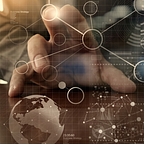Play Hard. Work Hard; The Gamification of the Workplace
Games. Gamers. Gamification. Sometimes it seems like the whole world is playing something on their cell phones. Every day at 3 PM, hundreds of thousands of people across the U.S., open their phones to answer trivia questions on an app called HQ Trivia. On the subway in NYC, a favorite is miniature video games, like Tetris, that people happily play from one stop to the next.
Today’s primary consumers (Millennials, and the Gen Zers behind them) are used to being entertained. And with so much access to entertainment, people are starting to expect it as part of their daily lives. Many would argue that all those hours playing Games on your phone is a waste of time — but smart companies are riding the Game wave — and figuring out how to make a national obsession into a really, really good thing.
Gamification Does Good
First off, what is Gamification? Gamification: the application of game-design elements to non-game situations. Hhhmmm. What if we could encourage our employees, to engage in our businesses, by making it fun? Games. Gamers. Gamification. This gift is the perfect technical antidote to fight disengaged employees — in an era when management really needs them switched on! In 2017 alone, ‘disengaged employees cost organizations between $450 and $550 billion’. That number is no laughing matter to any organization, and first movers are giving Gamification a shot.
But how do we bring Gamification into the workplace? Obviously, the point is to try to imitate satisfying, smart phone environments at work — and use them for work things. How might that be received, you ask? It is estimated that ‘79% of employees claim they feel more motivated when their learning environment emulates a game’. Hence, Gamification is being lauded as a great way to help stimulate learning processes, in an environment that increasingly demands continual learning and constant upskilling.
No-Brainer Brain Teasers
‘Organizations that deploy gamification can improve their engagement by 48%’, according to a study conducted by Aon Hewitt, “for every 1% increase in employee engagement you can expect to see and additional 0.6% growth in sales for an organization’. These are powerful statistics with strong impacts; increased employment engagement increases revenues and decreases costs. Therefore, ‘businesses with engaged employees have 12% higher profitability’. Those are some very real numbers for organizations striving to survive current market transformations.
Many companies already incorporate Gamification in their business model. Deloitte uses Gamification to make leadership training for senior executives’ ‘addictive’ by incorporating badges, leaderboards and more. Google found a way to Gamify how employees submit travel expenses, which resulted in 100% completion company-wide. Gamification got Game!
And the Naysayers Say…
Yes. There is always two sides to every coin. One of the most common arguments against gamification is that it could ‘hinder productivity’ if it promotes competition, as many of the nano-vid games do on smart phones. The fear is that it could ‘provoke employees to actively sabotage each other or make unethical choices rather than work together for the good of the company’. Scary, right? While you may have to give ear to this possibility, seasoned Gamers assure us that the ‘collaborative play’ actually tends to unite players in a shared universe. Who would have thought?
Game On
Learning by doing is the best way to build aptitude. So, by using a fun Gamified environment, an ecosystem of dynamic learning can be created. And enjoyed. Workers are increasingly requiring that their Employee Experience (eX) mimic that of the customer experiences they engage in every day. And leading firms are sitting up to listen. Gamification in the workplace is still shear, untapped potential. Wonder who’ll be the firsts to the party?
